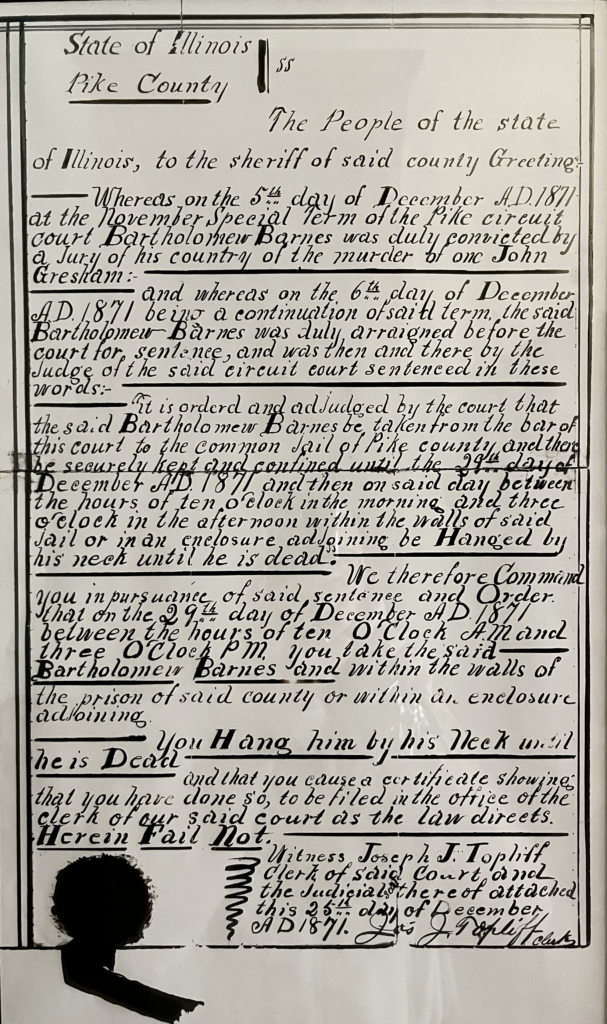The Pike County Jail has quite a rich history. The jail was constructed on its present site on the northeast corner of North Monroe Street and East Adams Street in Pittsfield in 1861 with the present addition added in 1984. The original jail is still used as administrative offices for the Pike County Sheriff Department. The Sheriff no longer resides at this location. The jail now has 63 beds and operated under the care and consent of the Pike County Sheriff.
Below is some of the history of the Pike County Jail as published many years ago.
The first jail was built near the site of the present town Calaboose. It was not a pretentious building, but sufficient for the wants of the county for many years. It was afterward sold, and was occupied as a tobacco factory, when it was destroyed by fire. The present handsome jail, on the northeast corner of the Public Square, was erected in 1861. It is a substantial brick building with a double tier of cells, necessary offices, and residence for the Sheriff.
But one execution has taken place in the Pittsfield jail. Bart Barnes having been hanged December 29th, 1871, for the murder of Mr. Gresham near Pleasant Hill. The execution was private, within the walls of the prison, but so great was the public curiosity over the event that hundreds of persons from the surrounding country crowded the streets around the jail.

This is the death warrant that was signed in 1871 for Bartholomew Barnes. It is on display at the Pike County Courthouse.
In 1878 an attack upon the jail was threatened, and at one time it appeared as if it would result in serious loss of life. A Dr. Brown, of Milton, was found dead in his door-yard, with a gunshot wound in his head; and it was supposed he had been murdered. Some days before that he had been reported drugged and robbed, and a man named McDonald, a supposed tramp, had been arrested and lodged in jail, being suspected as one of the robbers. His trial was to come off in a few days, and just before that event Dr. Brown was found dead, as stated and it was thought that some friend or chum of McDonald had murdered him to prevent his appearing against the latter. The friends and neighbors were intensely excited over the occurrence, and as the public had naturally become alarmed over the reiterated reports of outrages committed by tramps in other parts of the country, the excitement spread rapidly. A rigid search was instituted for the supposed murderer and kept up for days, but no one being discovered, the friends determined to wreak summary vengeance upon the prisoner, McDonald. A number of them mustered a short distance from town, with the avowed determination to march in after nightfall, break open the jail, and seize and lynch the prisoner. It was impossible for the sheriff to remove him to another place of confinement, as the roads were watched; whereupon the authorities communicated with Governor Cullom, and by his authority the militia companies were called out, and a strong force placed to protect the jail. For the first few nights the alarm was kept up, but fortunately the prompt action of the authorities had the desired effect. No attack was made, and the excitement quieted down. The result of the trial, which took place a short time afterward, proved the man McDonald entirely innocent of the charge of robbing, and consequently he had no motive for the killing of Dr. Brown, and he was discharged. This was the first serious attempt of the people to take the law into their own hands, and the result of the trial will go far toward preventing a similar occurrence in the future. Had the attempt proved successful it is certain that an innocent man would have been sacrificed. The citizens are proverbially law-abiding, and the McDonald emeute was as unexpected as it was unusual. The conduct of the militia during the trying occasion elicited the praise of the community.